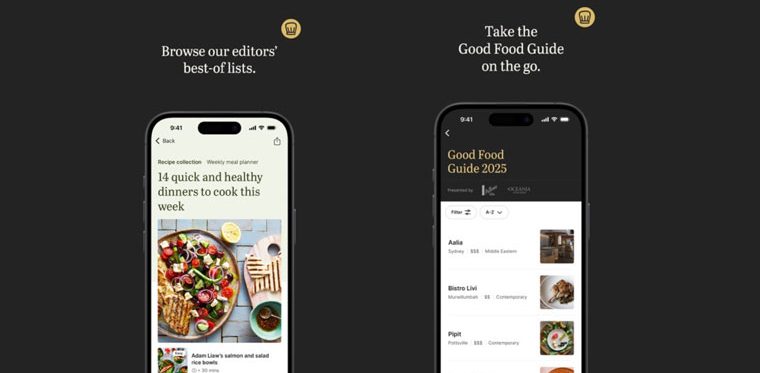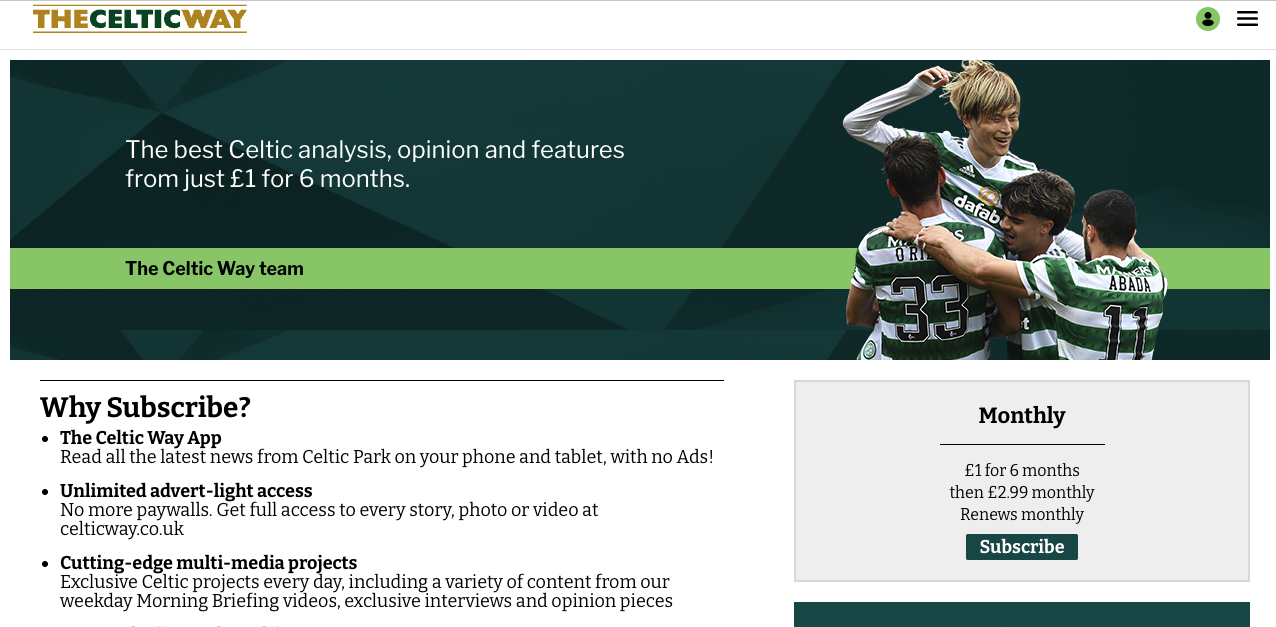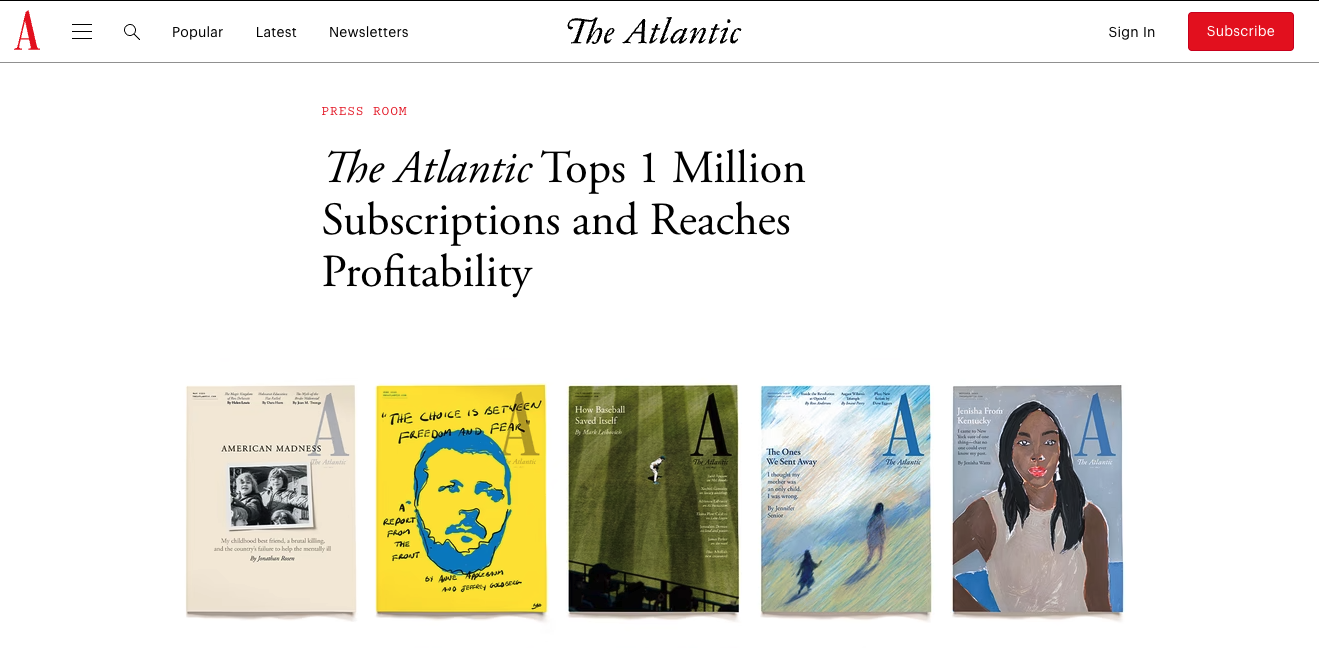
Newsletter
Newsletter
To continue revenue growth, we highlight tactics publishers are using to optimise the income from advertising and subscriptions.
7th February 2025

As advertising declines and becomes more volatile, publishers are focused on growing reader revenue. Yet digital subscription growth is slowing in the UK and has yet to overtake advertising as the primary source of revenue for large publishers, according to new data from the UK Association of Online Publishers and Deloitte.
But while reader revenue and advertising still make up the bulk of their income, “miscellaneous” revenue streams continue to provide hope for publishers. They were “the star of the show” with 66.3% growth in 2024 compared to 2023”, according to the Press Gazette.
The data underscore why publishers need to diversify their revenue streams while they continue their efforts to optimise the two main pillars of their business – subscriptions and advertising.
To achieve growth and optimise results in these two important revenue streams, publishers have found that premium content and selling advertisers a premium audience can drive even greater revenue growth. To do this, publishers need:
Growing revenue is one of the key interests of the members of our Mobile Matters publishing community. If you’d like to discuss how to grow subscription and advertising revenue from your mobile audiences, you can join here. We are both in the community and happy to chat there, but if you’d like a conversation with us about the strategies in the newsletter, just reply to this email.
Best, Kevin & James
By James Kember and Kevin Anderson
AOP and Deloitte’s most recent quarterly Digital Publishers Revenue Index (DPRI), which tracks income at large UK publishers, showed subscription growth is slowing and that the biggest players were capturing more of that growth.
Subscription revenue has grown as a percentage of overall income but still not overtaken advertising. Whilst 5 years ago subscriptions made up only 22% of a publisher’s revenue and advertising 42%, it now stands at 33% to advertising’s 38%. Moreover, the DPRI report indicated that publishers have become increasingly less willing to rely on advertising revenue due to its unpredictability.
The report suggested that we are almost at a stage where subscription revenue growth will start to plateau. Despite that, revenue growth in the market has remained but the DPRI rolling 12-monthly subscription revenue growth has declined steadily from 17.5% in their 2023 Q3 report to 7.3% in the latest edition. If the trend continues, it will level out around the middle of this year.
The bright spot was in “miscellaneous” revenue streams. In the past, this was dominated by events, e-commerce and affiliate marketing, However, that 66.3% spike was down to “growth in data sales, either to aggregators, business partners, or AI companies seeking model training materials”, the report found.
The report offered up one more wrinkle. In the third quarter of 2023, 58% of publishers polled saw revenue growth, but by a year later only 30% had. The percentage of publishers reporting growth had declined every quarter in the past year, and 30% is “the most extreme concentration of growth among top performers yet reported by the DPRI”.
The report supports two conclusions that the researchers at the Reuters Institute have included in their recent Digital News Reports:
AI deals also favour the largest players, with smaller publishers struggling to protect their IP or even engage the AI heavies in talks to license their content.
Justine Roberts, CEO of Mumsnet, told Connectopia’s Emerging Tech Network this week that OpenAI scraped her domains without permission and then refused to strike a deal with her, said Andrew Webb, the founder of Connectopia, a consultancy connecting tech suppliers and publishers. OpenAI said her data sets were too small. “If this is the case for Mumsnet with 8m users, how will smaller publishers fare?” Andrew asked.
While these other sources of revenue have taken on more importance, subscriptions and advertising remain 71% of publishers’ revenue in the UK. With all of the changes in the industry, publishers have had to pursue multiple, concurrent paths to sustainability. Publishers, big and small, are diversifying their businesses, and while they are, they are seeking to optimise their existing core revenue streams of reader revenue and advertising.
To achieve this optimisation, one model is Mather Economics’ total revenue optimisation strategy. Mather’s approach leverages data to maximise a publisher’s revenue streams across print and digital channels. They use almost every tool in the revenue operations box to achieve this, including advanced analytics to drive audience segmentation, paywall strategy and pricing strategy. Ultimately the key is to use data to build revenue based on an audience’s needs and values and to find the optimal balance of multiple revenue streams to maximise revenue.
Finding the best revenue mix is also key to the approach taken by two Asian publishers featured in a recent article by WAN-IFRA. Kompas, Indonesia’s leading newspaper, and the South China Morning Post (SCMP) have been exploring how to enhance their revenue by balancing the income earned from subscriptions and advertising. Whilst they are two different businesses with two very different business models, their approaches are similar in a few important ways.
Kompas and SCMP reached the same conclusion: They could not sustain their businesses if they relied solely on either their subscription or advertising revenue, so they needed to find a way to make them work together. Some lean digital start-up publishers have been able to build subscription-only businesses, but for legacy publishers, it is impossible to focus exclusively on one stream of income. The scale of their operations and the decline of high-volume, high-value advertising-supported models mean they have had to develop skills in managing multiple revenue streams and developing new ones, too.
Advertising and subscription-led business models can come into conflict. Advertising-dependent business models require high traffic volumes, but as traffic has declined due to the end of mass referrals, publishers have had to increase the volume of ads. We’ve all visited those sites so crammed full of ads that they load slowly and it’s impossible to read the content. Poor user experience and undifferentiated content intended to appeal to the largest possible audience do not deliver the premium experience necessary for a subscription business. And putting content behind a paywall limits traffic, reducing ad yield. Balancing these trade-offs is the conundrum that publishers have faced.
Kompas and SCMP needed to find a way to balance these tensions to maximise the revenue from advertising and subscriptions and achieve sustainability.
The key for both Kompas and SCMP was to create premium, engaging content that attracts subscribers, while offering advertisers a platform to reach a valuable, engaged audience. While known users – whether registered or subscribed – are a smaller subset of a publisher’s overall audience, they are more engaged and valuable. The Independent has found that subscribers are 62x more engaged than anonymous users, and the Daily Beast in the US found that subscribers are 18x more valuable. However, the value is not only in subscriptions. Revenue from a known user, which includes subscribers to their newsletters and app users, is 169% greater than an unknown user because of income from first-party data and advertising.
High-quality publishers have a unique position within the advertising ecosystem as brands want to reach the readers who are most interested in their products and services, it’s just a matter of aligning content and advertising strategies.
Both publications started this process through significant investment in their subscription products and saw the long-term revenue that a loyal paying audience can deliver. Kompas implemented a metered paywall to build habit and loyalty that led to subscriptions and focused on using localised content to ensure relevance to their audience. Meanwhile, SCMP built a content strategy focused on high-value readers. Their analysis identified that business and politics were of particular interest to this group and offered exclusive access to these verticals to users who subscribed.
These approaches dovetailed nicely with their advertising strategies. Both looked to turn advertising into a higher quality product than traditional programmatic. SCMP created what they called “premium programmatic” which emphasised brand safety as a way to appeal to higher-value advertisers. They delivered this by curating content that they knew would connect with their audience, which in turn would appeal to their advertisers. This had the benefit of utilising advertising that complemented their editorial content, rather than clashing with it. Whereas Kompas leaned into diversification through events, book publishing and targeted content.
Both these approaches relied on using data-driven insights to understand the reader better, allowing them to deliver tailored content and advertising. But they took different approaches. SCMP used AI to enhance personalisation within its newsletter and combined this with investment in SEO to attract a wider audience. Meanwhile, Kompas relied on engagement metrics to ensure that their approach was working to build relevancy and interest rather than focusing purely on volume-based metrics such as page views. The outcome was the same: They better understood their readers’ needs and translated that into improved editorial and commercial performance.
In this newsletter, we frequently discuss the importance of a data-driven, audience-centric approach for publishers. It allows publishers to deliver content that audiences value and to identify high-value audiences for advertisers. Moreover, the lesson from Mather and WAN-IFRA is that applying the same techniques to audience development across the revenue streams will deliver results. The best approach is a hybrid strategy to maximise revenue by creating a value proposition that drives growth for digital subscriptions and maximises advertising revenue. Executed well, this approach is a flywheel that increases revenue to allow for continued investment in in-depth and differentiated content and the operational and commercial capabilities to accelerate diversification and transformation.
Here are some of the most important headlines about the business of news and publishing as well as strategies and tactics in product management, analytics and audience engagement.

Newsletter

Newsletter

Newsletter

Newsletter

Newsletter